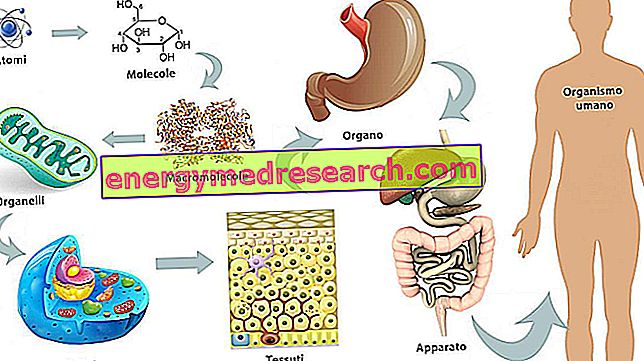
Histology is the scientific discipline that studies tissues, both morphologically and functionally.
Tissues are biological structures consisting of groups of cells that are similar in structure and function .
Not all cells in our body perform the same functions; however, there are several organized groups of cells - the tissues precisely - that perform the same functions and that also share shape and size. Specific to function, in fact, corresponds a specific structural and morphological characterization.
Within the human organism there are numerous tissues, which however can be grouped into four basic morphological types:
- epithelial tissue
- connective tissue
- nervous tissue
- muscle tissue.
By putting together these four different types of tissue, it is possible to construct all the organs of the human body (an organ is a structure consisting of a minimum of 2 to a maximum of 4 tissues). The stomach, for example, consists of various types of epithelial tissue, muscle tissue, connective tissue and small amounts of nervous tissue.
At a higher level we find the apparatuses, formed by more organs that contribute to the performance of a function (eg movement â † 'locomotor apparatus, digestion and absorption â †' digestive system, reproduction â † 'reproductive system, etc.).
- More cells form tissues â † 'more tissues form an organ â †' more organs make up an apparatus â † 'more apparatuses make up an organism.
Before analyzing them in detail, let's see what the general characteristics of the fabrics are:
- The epithelial tissue (also called epithelium) is formed by cells closely joined together, so that there are no intercellular spaces or substances between them.
- The connective tissue is formed by cells separated from each other by the interposition of an intercellular substance; examples of connective tissue are given by adipose, cartilaginous, bone, blood and lymph tissue)
- Muscle tissue is formed by elongated elements capable of actively contracting
- Nervous tissue is made up of cells with extensions, through which they come into contact with other nerve cells or with other types of cells (even belonging to other tissues). Nerve cells have a particular functional characteristic, excitability, which allows them to conduct nerve stimuli.
NOTE: within each basic type of fabric it is possible to identify further specializations, which lead to the definition of sub-typologies of fabric. For example, we speak of epithelial lining, glandular and sensory tissue, of compact or loose connective tissue, of adipose, cartilaginous and bone tissue, etc.



